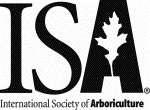
| Current Articles |
| Browse Archives |
| Search |
| Contact Us |
| AUF Home |
 |
Arboriculture & Urban Forestry Online
| Volume 29, Issue 6 —
November 2003
https://www.isa-arbor.com/Publications/Arboriculture-Urban-Forestry |
|
The Ease of Ignition of 13 Landscape Mulches (View PDF) Larry G. Steward, T. Davis Sydnor, and Bert Bishop Abstract: The ease of ignition of 13 commonly used landscape mulches was evaluated. Mulches have different ignition potentials based on several factors, including the length of exposure to heat and to the ignition source. Some materials ignited more frequently when exposed to a lit propane torch for 15 seconds. The most to least commonly ignited materials were ground rubber, pine straw, oat straw, shredded hardwood bark, shredded cypress bark, recycled pallets, 2.5 to 5 cm pine bark nuggets, 1.3 to 2.5 cm pine bark nuggets, shredded pine bark, cocoa shells, composted yard waste, bluegrass sod, and brick chips. Not all organic mulches readily ignited, nor were inorganic mulches uniformly ignition resistant. The results of this research show that there are definite differences in the ease of ignition between commonly used mulches. The results demonstrate that landscapers do not have to resort to using inorganic materials such as brick chips and gravel for ignition-resistant mulches. Under high-temperature ignition, one inorganic material, ground rubber was ignited consistently and was difficult to extinguish. Conversely, there are organic materials that are unlikely to ignite. These also are maintenance practices that will prevent or reduce ignition of these mulches. Keywords: Mulch; fire; ignition; combustion; pine bark; hardwood bark; straw; ground rubber. |
Current Articles
| Browse Archives | Search | AUF Home | ISA Home
| Get Acrobat